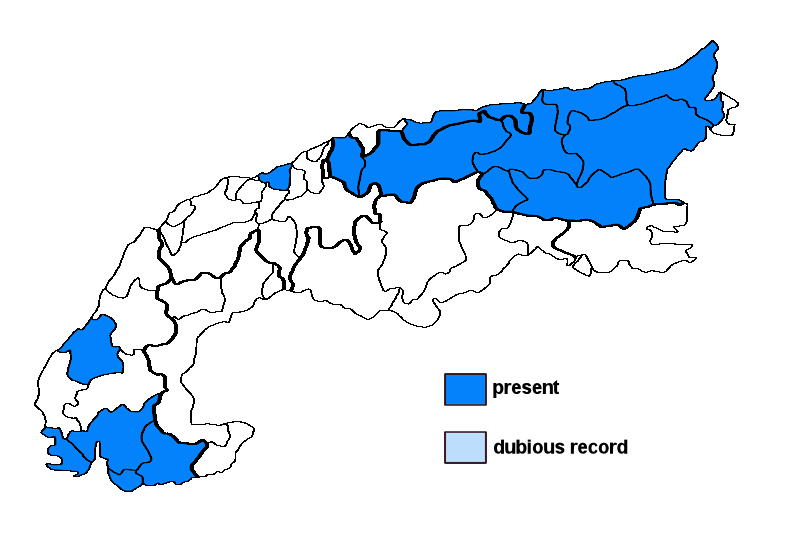Peridiothelia fuliguncta (Norman) D. Hawksw.
Syn.: Didymosphaeria dannenbergii (Stein ex Eitner) Sacc., Didymosphaeria fuliguncta (Norman) Vain., Microthelia fuliguncta Norman, Polycoccum dannenbergii (Stein ex Eitner) Vězda, Tichothecium dannenbergii Stein ex Eitner
Non- or doubtfully lichenised.
Substrate: bark
Altitudinal range: from the submediterranean/colline belt (potential vegetation: mixed deciduous forests dominated by Quercus and Carpinus) to the montane belt (potential vegetation: deciduous forests dominated by Fagus sylvatica and closed coniferous forests with Picea abies)
Note: a probably non-lichenised species; ascomata scattered, erumpent, hemispherical with an applanate base, the wall pseudoparenchymatic of subglobose hyphal cells, dark reddish-brown at the flanks, subhyaline at the base, interascal filaments numerous, persistent, branched and with anastomoses, asci broadly subcylindrical, 8-spored fissitunicate, ascospores 1-septate, brown (17-22 × 8-10 µm) with slightly unequal cells and a faintly verruculose perispore; on the bark of Tilia (records from other trees need critical re-evaluation), sometimes the ascomata break through the thalli of epiphytic Lecanora s.lat., Ochrolechia, and Pertusaria s.lat. and then virtually lichenicolous; widespread in Europe, the distribution gaps in the Alps are probably due to undercollecting.
Austria: Vorarlberg; Tirol; Salzburg; Kärnten; Steiermark; Oberösterreich; Niederösterreich (incl. Wien); Germany: Oberbayern; Switzerland: Schwyz; France: Alpes-de-Haute-Provence; Alpes-Maritimes; Isère; Vaucluse; Var;





